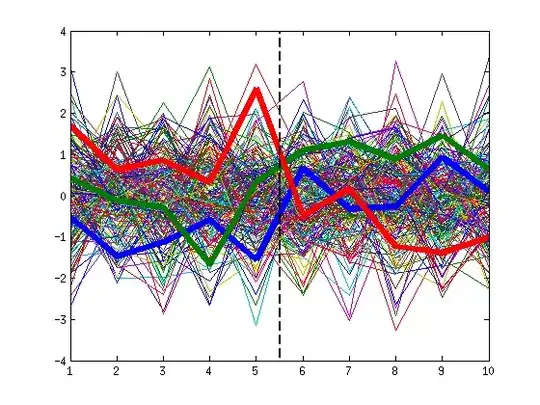I'll give you the intuition behind my problem first. I have data on whether children ($n \approx 200$) can read and their age in integers from 0 to 14.
For each age, it is straightforward to calculated the expected value $$E(read|age=age_t) = \frac{k}{n}.$$
For instance, if I observe 5 children at age 6 who can read and 5 who cannot, the expected value of $read$ given $age = 6$ is 0.5. If I then observe 7 children and who can read and 3 who cannot at age 7, I might think intuitively that 20 percent of children have learned to read at age 6 (assuming the sample is random and there is no attrition).
What I am really interested in is the rate of change in the state variable $read$. I want to know the mean age at which children learn to read, and the variance of that new variable. As a first pass, I have tried to tackle this discretely by calculating $\Delta read_t = E(read|age = age_{t+1}) - E(read|age = age_t)$ for each age. Then I take $\sum_{t=0}^{13}age_t \times \Delta read_t$ to be the mean value at which children learn to read.
I'm aware that this is not an adequate approach to this problem, but I'm trying to think it through. My reasoning is that I think of the number of children who can read at each age to be like a cdf for the variable "when learned to read." The rate of change is then analogous to the pdf, and I can find the expected value of "when learned to read" in the normal way.
However, each $E(read|age=age_t)$ is itself a random variable, so the cdf is not strictly increasing because the observed outcome of $read$ for an older age group might be lower than for a younger one. I would also ideally like to be able to construct valid confidence intervals and have a better grasp on the problem in general. I should also add that this is historical data, so the final outcome for reading is not 100% literacy, but more like 70%. I suspect that I'll have to normalize the variable in some way.
Any help or guidance is very welcome. I suspect the problem will involve maximum likelihood estimation using some combination of a normal and binomial distribution. I've explored this method somewhat, but I feel like I'm at a bit of a roadblock and would appreciate some guidance before proceeding. Is what I am attempting even possible?
